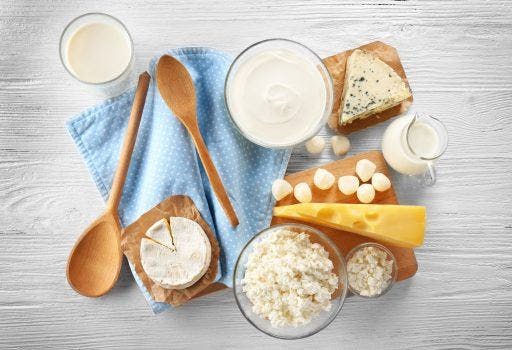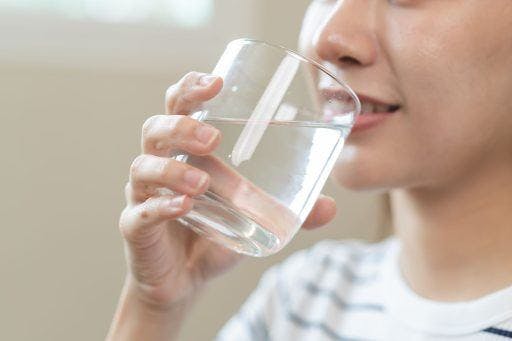Do you ever wonder, “How can I make my teeth stronger?” You’d be surprised how vital nutrition is to boosting oral health. That’s right: a consistent, balanced diet of healthy foods can bring you closer to your perfect smile. Certain nutrients form the backbone of strong, decay-resistant teeth.
Meanwhile, excess sugar and anything acidic can make your chompers fragile and prone to damage. So, what does the perfect diet for healthy teeth look like? Here are five essential eats that treat your teeth.
5 Good Foods for Teeth

These are five of the best foods for healthy teeth. Add them to your meal plan, stat!
1. Dairy milk and cheese
The Australian Society of Orthodontics (ASO) considers cheese a “superfood for the teeth” because of its “ability to combat acid erosion.” They suggest eating soft cheeses as an after-meal snack to counteract the effects of tooth decay-causing acids, like those in fizzy drinks.
Other dairy products, like milk and yoghurt, can also help with dental health. Dairy contains calcium, which strengthens bones and teeth. If your diet lacks this essential mineral, you could be at higher risk for brittle bones, cavities, and other issues. According to The Better Health Channel, the average adult needs at least 1,000 mg of calcium a day, ideally from whole foods rather than supplements.
2. Soy and tofu
If you’re observing a plant-based or dairy-free diet, you need to get your daily dose of calcium through other sources. Soy products, like soy milk and tofu, are some of your best options. They’re affordable, widely accessible, and offer similar nutritional benefits to dairy.
One downside of dairy is its saturated fat content. “Good” fats (i.e., the unsaturated kind found in olive oil, fish, and nuts) are integral to a balanced diet, but too much sat-fat can spike cholesterol. That’s another reason soy makes a great alternative – it’s much lower in unhealthy fats.
3. Fatty fish
The National Institutes of Health (NIH) stresses the importance of vitamin D in the body’s ability to absorb calcium. When you don’t get enough of the sunshine vitamin in your system, you won’t benefit from calcium’s bone-boosting abilities. One recent study by the institute states that “one in four Australian adults is vitamin D-deficient.”
While you can fill up on vitamin D through midday sun exposure, it helps to have it as part of your diet and supplement regimen, too. Oily fish like salmon, mackerel, and sardines are rich in vitamin D3 and omega-3 fatty acids – those “healthy fats” mentioned earlier.
4. Fruits and vegetables
Think of crunchy fruits and veggies as nature’s toothbrush. According to the ASO, their high-fibre content “scrubs” the teeth and stimulates saliva production because of the extra chewing. They also help neutralise acids and balance out the sugar you get from other foods. The Australian Dental Association (ADA) recommends celery, carrots, and apples for these purposes.
Pro tip if you’re undergoing orthodontic treatment: pop your retainers or aligners off before you snack. ClearCorrect aligners may be ultra-comfortable and stain-resistant, but you’ll still need to remove them before any rigorous chewing. That way, you prevent damage to your orthodontic appliance while the fruits and veggies work magic on your teeth.
5. Green tea
Coffee is known for staining teeth, triggering harmful acids, and causing bad breath. So, it’s usually the first thing people get rid of in their quest for a brighter, whiter smile. But what if you can’t do without your daily caffeine fix? Try green tea for an energy boost minus the drawbacks!
While a cup of tea offers significantly less caffeine than brewed coffee, it makes up for this with other nutrients. Green tea contains bacteria-fighting polyphenols to help manage plaque and prevent cavities. It’s also rich in catechins, an antioxidant that reduces inflammation in the body, including the gums.
How to Eat Your Way to Better Oral Health

Besides incorporating the top foods for healthy teeth into your diet, you can also commit to better eating habits that benefit your oral health. Here are a few tips.
Tip #1: Drink lots of water.
Dehydration thickens saliva and keeps it from doing its many jobs. That includes breaking down food, neutralising bacteria, and preventing tooth decay. Most experts recommend drinking at least two to three litres (eight to ten cups) of water daily to stay hydrated. You may need more depending on your activity level. Drinking fluoridated water also has the added benefit of strengthening teeth.
Tip #2: Control your sugar intake.
The World Health Organization (WHO) identifies free or added sugars as the #1 factor in developing dental caries (a.k.a. tooth decay and cavities). When bacteria in the mouth metabolises sugars to produce acid, it can wear down your teeth’s enamel and dentine. WHO advises consumers to limit their sugar intake to less than 5-10% of daily nutrition. No more desserts after every meal!
Tip #3: Chew gum.
At least one study published in the National Library of Medicine confirms the oral health benefits of sugar-free gum. Chewing gum promotes “a strong flow of stimulated saliva,” which helps clear sugars and neutralise pH in the mouth, among other upsides. The ADA suggests chewing gum for 20 minutes after eating to manage decay-causing acids.
Remember: good eats lead to great teeth. Invest in healthy food, kick bad snacking habits to the curb, and gulp down that H2O. Maybe swap the gummy bears for plain ol’ gum. Your smile depends on it!
References:
Branch, N. S. C. a. O. (2023, May 8). Calcium and Vitamin D: Important for Bone Health. National Institute of Arthritis and Musculoskeletal and Skin Diseases.
Department of Health & Human Services. (n.d.). Calcium. Better Health Channel.
Dunlop, E., Boorman, J. L., Hambridge, T., McNeill, J., James, A. A., Kiely, M., Nowson, C. A., Rangan, A., Cunningham, J., Adorno, P., Atyeo, P., & Black, L. J. (2022). Evidence of low vitamin D intakes in the Australian population points to a need for data‐driven nutrition policy for improving population vitamin D status. Journal of Human Nutrition and Dietetics.
Oamanage. (2021, August 27). Teeth Healthy Foods List: 9 Best Foods For Your Teeth. Orthodontics Australia.
The Australian Dental Association. (n.d.). ADA.
The oral health benefits of chewing gum. (2012, November 1). PubMed.
World Health Organization: WHO. (2017). Sugars and dental caries. www.who.int.



